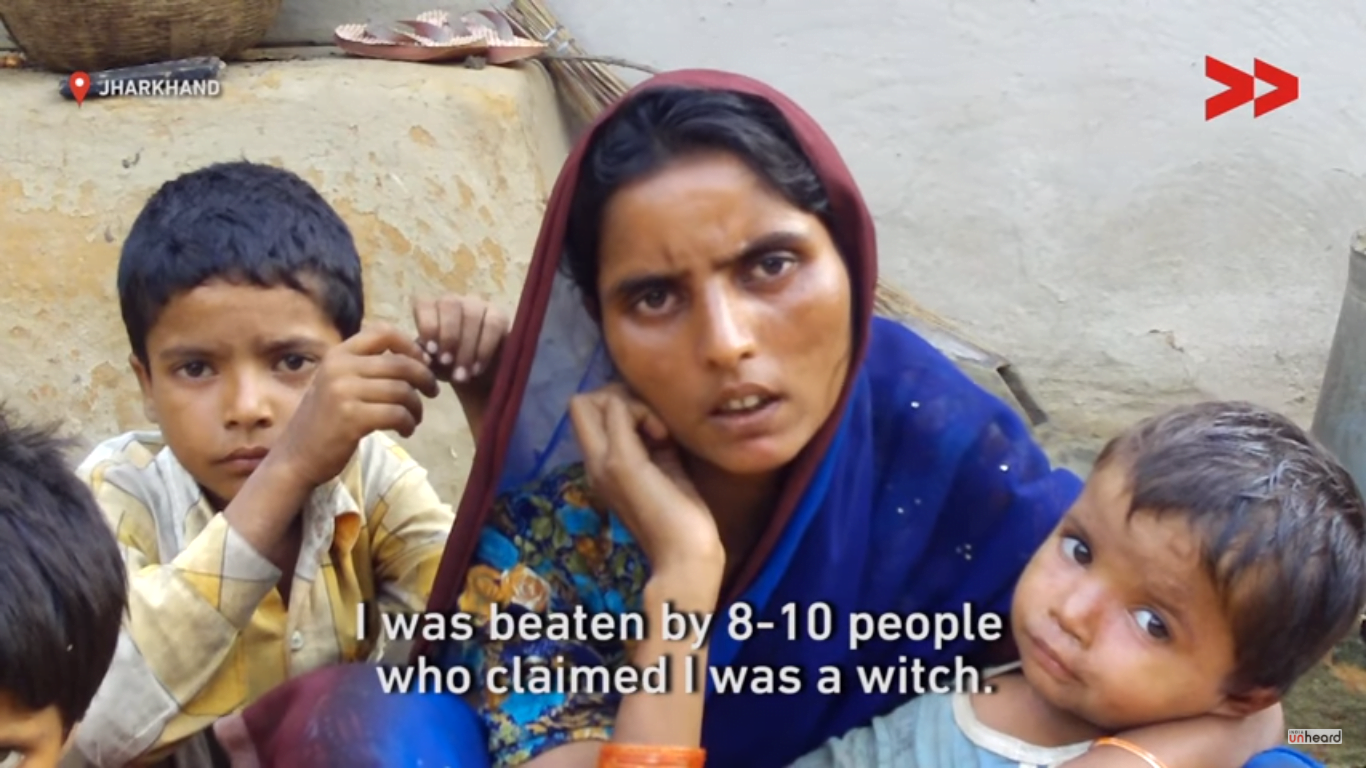Trigger warning: graphic accounts of physical violence.
“They forced me to eat human faeces and beat my children, calling them ‘children of a witch.’ I had nowhere to escape. They tortured me mercilessly.”
Unfortunately, this horrific narrative is not unheard of for the Dalit and Adivasi residents in Jharkhand’s hinterland, where witch-hunting is a common practice. According to the National Crime Records Bureau (NCRB), 2097 murders were committed between 2000 and 2012, where the motive was “witch-hunting”.
People, mostly women, are targeted and branded witches whenever a calamity befalls the village – be it death, disease or drought. Witch doctors known as Ojhas, mostly men are called upon to undo the supposedly evil influences of a witch. Many times, victims and survivors of witch-hunting are also women suffering from mental illness.
Unable to cure or heal people, Ojhas evade responsibility by claiming the existence of a “witch” somewhere in the vicinity. One word from an Ojha is enough for local residents to gather as a mob and seek blood-thirsty violence and hunt a “witch”, usually a non-dominant caste woman and bring her to “justice”.
2097 murders were committed between 2000 and 2012, where the motive was “witch-hunting”.
In 2015, five women were brutally murdered after a youth’s untimely death in Jharkhand — an entire mob of villagers attacked them after an Ojha accused them of practising witchcraft and causing his death. The women were jolted awake from their sleep, dragged out of their homes and bludgeoned to death. It isn’t just men who victimise them either; women can be just as brutal.
According to a research conducted by Partners for Law in Development, witch-hunting is rooted in patriarchy, financial disputes, superstition and other personal and social conflicts. More often than not, these conflicts arise out of jealousy or tension between the victim and their relatives, friends or acquaintances.
Given that India has an 83% shortage of specialist medical professionals in community health centres and the levels of education are low in these areas, people’s beliefs in Ojhas are strong. The lack of such infrastructure is partly responsible for the myriad atrocities, including physical and psychological torture, inflicted on vulnerable women. The ‘punishment’ meted out ranges from death to being banished from their homes.
Also Read: Another Domestic Violence Story; Yes, Dowry Is Still Rampant In India
Although witch-hunting is practised across 12 states in India, only 7 states have laws criminalising the practice – Jharkhand, Bihar, Chhattisgarh, Maharashtra, Rajasthan and Assam. However, a large number of perpetrators are still let out on bail and there is no system in place to re-arrest them.
“I still see my mother’s murderers roaming freely in front of me. I feel scared while going to school,” says an adolescent girl, whose mother was murdered after being branded a witch. There are no guarantees that the girl will not suffer the same fate as her mother. If the perpetrators escaped a crime once, will the second time be any different?
Jharkhand ranks highest in these crimes against women (and in certain cases, also men and child victims) in which “witchcraft” is the only charge against the victims. Other states such as Chhattisgarh, Rajasthan, Assam and Bihar also report witch-hunting deaths, though under-reported.
Many a times, victims and survivors of witch-hunting are also women suffering from mental illness.
An analysis of NCRB data between 2010 and 2012 reveals that while there were 77 instances of death, only 9 cases were registered in Jharkhand. The figures also don’t take into account other kinds of ‘vengeance’ exacted by a village, like forcing the victim to parade naked in the village square, to eat faeces, banishment and ostracisation; none of these violent acts receive police warrants.
In most cases, the reason is not just superstition; almost invariably someone who would like to settle a land or financial dispute or with a personal vendetta can settle on witch-hunting as a “solution”, especially if the victim is from a non-dominant caste. As one victim’s husband states, jealousy can be an important factor behind lynchings.
While immediate family members usually do protect victims, they do so at great danger to themselves. While some people are attempting to hunt down “witches” and offer them nothing but pain and distress, we hope that others can step forward to stop this ‘tradition’ forevermore. In a country that looks to the future, how long can we allow such inhuman acts to continue?
Also Read: ‘Make Men Wear Veils And They Will Understand Our Difficulties’
Video by Nirmala Ekka, Emilya Hansda and Mukesh Rajak. Article by Sangeeta Rane.
Featured Image Credit: Video Volunteers YouTube
About the author(s)
Video Volunteers is a community media organisation that identifies, trains and empowers rural and marginalised people to make films, show the world their reality, assert their rights and become drivers of change. We work across 16 states with over 200 Community Corespondents 63 of whom exclusively work on reporting and taking action on everyday instances of patriarchal discrimination.




